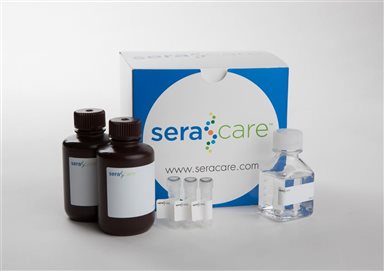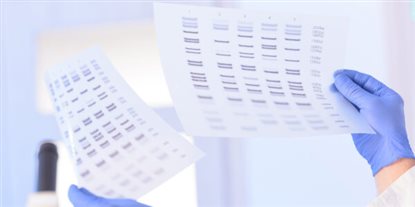BOUTIQUEResources
LGC·SeraCare·KPL (hereinafter referred to as KPL), distributed by Ximeijie, is an internationally renowned manufacturer of commercially available affinity-purified secondary antibodies and substrate chromogenic systems. It has over 40 years of experience in product R&D and production, and has obtained ISO 13485 quality management system certification. Its products feature high batch-to-batch consistency and stable, reliable quality, which have won wide recognition and trust in the diagnostic reagent industry. KPL's product portfolio includes cost-effective secondary antibodies, substrate chromogenic reagents, and immunoassistive reagents, etc., which are widely used in fields such as immunological research, diagnostic reagent development, and clinical testing. KPL's cost-effective substrates and general-purpose reagents can be extensively applied to various experimental platforms, including Enzyme-Linked Immunosorbent Assay (ELISA), Western Blot (WB), Immunohistochemistry (IHC), and Enzyme-Linked Immunospot Assay (ELISpot). This article will focus on introducing the cost-effective substrate product series under the KPL brand that are suitable for Western blotting technology.

Western Blot technology
Western Blot technology is an immunoblotting technique used for detecting specific proteins, and it is one of the most popular methods in the field of immunoassays. Based on protein separation by molecular weight and specific antibody recognition, it involves separating proteins via electrophoresis, transferring them onto a solid-phase membrane, and then using specific antibodies for detection.
?
In a Western Blot experiment, signal detection is a critical step, serving to visualize and quantify the target protein. In the past, colorimetric detection and low-sensitivity chemiluminescent detection drove the expansion of related research. However, with the continuous increase in requirements for detection sensitivity and advancements in imaging analysis systems, the design of chemiluminescent molecules has also achieved significant progress, enabling detection with higher sensitivity.
?
In the Western Blot experimental system, high-quality substrates are crucial for achieving high sensitivity and low background signals. The chromogenic substrates and chemiluminescent substrates provided by KPL, with their excellent performance and reliable quality, have become core components of the Western Blot experimental system, helping researchers obtain more ideal experimental results.

Chemiluminescence is the optimal choice for detecting trace proteins. Its principle lies in the luminescence of a chemiluminescent substrate when catalyzed by an enzyme (such as HRP or AP) labeled on an antibody. KPL’s LumiGLO? series consists of luminol-based HRP substrates, offering a complete range of detection solutions from regular to ultra-high sensitivity. KPL’s PhosphaGLO? series, on the other hand, are dioxetane-based AP substrates that combine high sensitivity with operational flexibility. Both series are suitable for Western Blot and ELISA applications.
?
LumiGLO Reserve? & LumiGLO? Chemiluminescent Substrates
Both LumiGLO Reserve? and LumiGLO? are luminol-based chemiluminescent substrates, specifically designed for high-sensitivity detection.
- LumiGLO Reserve?: Its sensitivity is over 20 times higher than that of LumiGLO? and other similar products, making it particularly suitable for detecting low-abundance proteins or analyzing precious samples. The luminescent signal can last for 4 to 8 hours, with the strongest signal appearing within the first hour after the reaction. The luminescence intensity is significant, allowing for easy and clear capture by chemiluminescent imagers. This product is supplied as a stable two-component solution, which can be prepared for immediate use at a 1:2 ratio. It is available in three specifications, along with matching concentrated KPL wash buffers, further enhancing experimental convenience.
- LumiGLO?: Also provided as a two-component solution, it can be used simply by mixing equal volumes of the two components, ensuring easy operation. In Western Blot and ELISA detection, it is more sensitive than chromogenic substrates and produces lower background. The maximum luminescence intensity is achieved within 5 minutes after reaction with HRP, and the signal can persist for 1 to 2 hours. It supports multiple stripping and re-probing of immunoblot membranes, and its linear dynamic range is superior to that of most similar products. Thus, it is widely applicable to various protein detection experiments.
?
The detection results of both products can be permanently recorded using X-ray films or chemiluminescent imagers.
|
Product Name |
Item Number |
Specification |
Reactive Enzyme / Catalytic Enzyme |
Signal Type |
Sensitivity |
|
LumiGLO Reserve? Chemiluminescent Substrate |
5430-0050
5430-0051 |
600 cm2 1000 cm2 2400 cm2 |
HRP |
Chemiluminescence |
10-15-10-12 |
|
LumiGLO? Chemiluminescent Substrate |
5430-0042 |
60 mL 240 mL 720 mL |
HRP |
Chemiluminescence |
10-12 |
?
?
PhosphaGLO Reserve? AP & PhosphaGLO? Chemiluminescent Substrates
Both PhosphaGLO Reserve? and PhosphaGLO? are dioxetane-based, ready-to-use, single-component chemiluminescent substrates, specifically optimized for alkaline phosphatase (AP)-labeled systems.
- PhosphaGLO Reserve?: It features ultra-high sensitivity at the femtogram level, enabling accurate detection of low-abundance proteins while significantly reducing the consumption of precious samples. It provides excellent signal intensity and stable luminescence for up to five days, supporting multiple exposures or repeated readings. Its signal intensity is significantly superior to that of traditional chromogenic substrates and other chemiluminescent products.
- PhosphaGLO?: It enables stable detection of proteins at the picogram level, requiring no additional blocking steps for simple operation. The luminescent signal can persist for up to five days, and the product can be stably stored at 4°C for two years.
Both products are compatible with various detection devices such as X-ray films and chemiluminescent imagers, providing a flexible and reliable solution for high-sensitivity protein detection.
|
Item Number |
Specification |
Reactive Enzyme / Catalytic Enzyme |
Signal Type |
Sensitivity |
|
|
5430-0052 |
100 mL |
AP |
化學(xué)發(fā)光 |
||
|
5430-0054 |
30 mL 100 mL |
AP |
化學(xué)發(fā)光 |
?
Chromogenic Substrate Product Series
Chromogenic substrates utilize enzymatic reactions to generate visible end products, making them suitable for detection scenarios where the target protein content is relatively high. The advantage of such substrates lies in the fact that their results can be directly observed on the laboratory bench and permanently preserved through photography, eliminating the need for a darkroom or professional imaging system. The chromogenic substrates provided by KPL are optimized for the detection of HRP (Horseradish Peroxidase) and AP (Alkaline Phosphatase), and are available in multiple sensitivity levels to ensure high stability and batch-to-batch consistency.
?
TMB 1 Membrane Peroxidase Substrate Product Series
TMB Membrane Peroxidase Substrate is a high-sensitivity chromogenic substrate, specifically designed for the detection of HRP (Horseradish Peroxidase)-labeled molecules. It can form clear dark blue precipitates at HRP-labeled sites. This substrate is available in two forms:
- TMB 1-Component Membrane Peroxidase Substrate: A ready-to-use single-component form that is convenient to use with no additional preparation required.
- TMB Membrane Peroxidase Substrate System (3-C): A three-component system. By omitting the enhancer, it can be adjusted to a soluble substrate system suitable for ELISA, enabling multi-purpose use of one product.
Both forms offer excellent sensitivity and application flexibility, and are suitable for various detection methods such as Western Blot, Dot Blot, and ELISA. Their high sensitivity, ease of operation, versatility, and high stability make them one of the most sensitive chromogenic solutions for membrane detection, ensuring the reliability and reproducibility of experimental results.
?
|
Product Name |
Item Number |
Specification |
Reactive Enzyme / Catalytic Enzyme |
Signal Type |
Sensitivity |
|
TMB 1-Component Membrane Peroxidase Substrate |
5420-0029 |
100 mL 200 mL 1000 mL |
HRP |
顯色 |
10-12 |
|
TMB Membrane Peroxidase Substrate System(3-C) |
5420-0025 |
440 mL |
HRP |
顯色 |
10-12 |
?
?
BCIP/NBT Phosphatase Substrate Series
BCIP/NBT phosphatase substrates are high-efficiency chromogenic detection substrates specifically designed for use with alkaline phosphatase (AP)-conjugated conjugates. They produce clear purple precipitated bands while maintaining extremely low background staining. This substrate is available in two forms: the classic three-component system, BCIP/NBT Phosphatase Substrate System (3-C), and the more convenient single-component BCIP/NBT 1-Component Phosphatase Substrate ready-to-use solution. Both forms are suitable for Western blotting and ELISpot assays, meeting different experimental needs and ensuring high sensitivity and reliability of detection results.
?
|
Item Number |
Specification |
Reactive Enzyme / Catalytic Enzyme |
Signal Type |
Sensitivity |
|
|
100 mL 6x100 mL 1000 mL 5000 mL |
AP |
顯色 |
|||
|
5420-0030 |
300 mL |
AP |
顯色 |
10-12-10-9 |

??
?
?
About the LGC·Seracare·KPL Brands
?
KPL (Kinetic Plasmonics Laboratories) is a company with a profound history and an outstanding reputation in the field of biological sciences. As one of the world’s early biotech companies to commercialize affinity-purified secondary antibodies, KPL has laid a solid foundation for its development by virtue of its pioneering position in this field. In addition, KPL is also one of the world’s leading manufacturers of secondary antibodies and chromogenic substrate systems, boasting nearly 40 years of experience in product R&D, as well as a wealth of professional knowledge and technical capabilities accumulated over the years. The company has obtained ISO 13485 quality management system certification, which ensures that all its products have minimal batch-to-batch variation and reliable quality. Characterized by high purity, high sensitivity, and an excellent signal-to-noise ratio (strong signal with low background), KPL’s products are highly trusted by researchers and diagnostic enterprises.
?
In 2013, KPL was acquired by SeraCare, a supplier of in vitro diagnostic (IVD) reagents, further consolidating its leading position in the industry. Founded in 1984, SeraCare is a major partner for global IVD manufacturers and clinical laboratories, and became part of the LGC Group in 2018. As the exclusive distributor of the LGC·SeraCare·KPL brand in China, Beijing XMJ Biotechnology Co., Ltd. is committed to promoting KPL’s high-quality products in the Chinese market and providing domestic researchers with premium products and professional services.
?


.png) 京公網(wǎng)安備 11010802028692號(hào)
京公網(wǎng)安備 11010802028692號(hào)